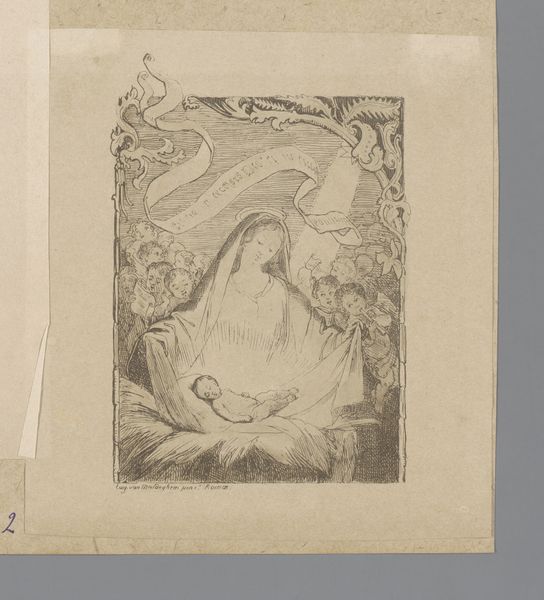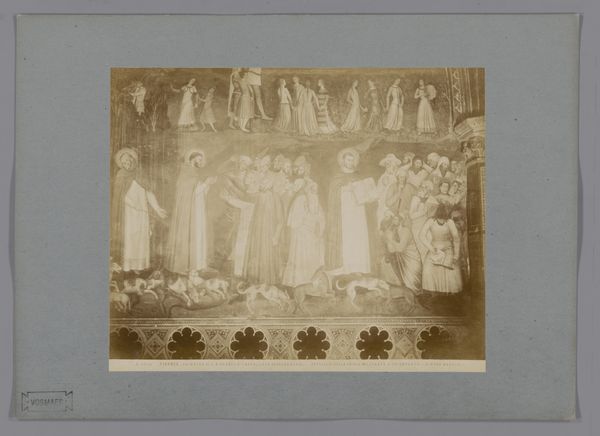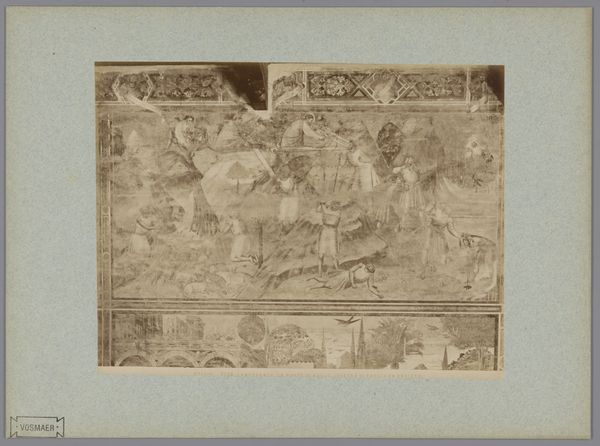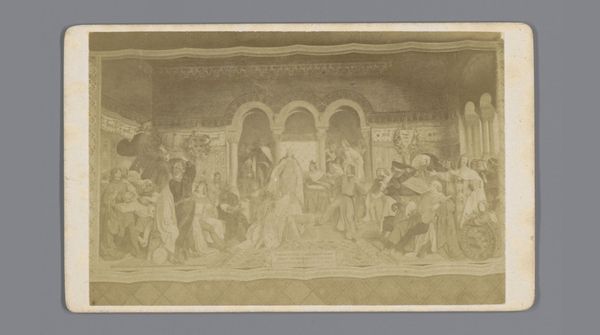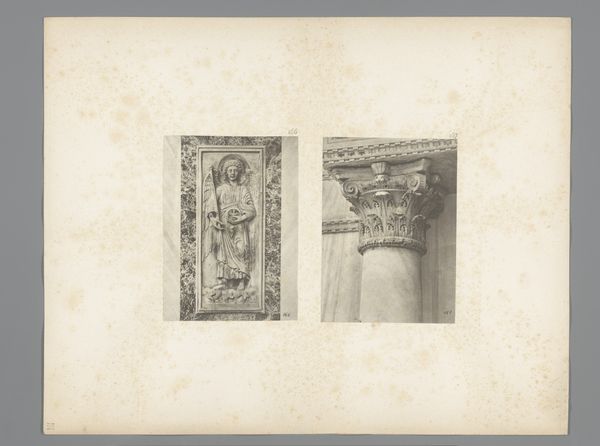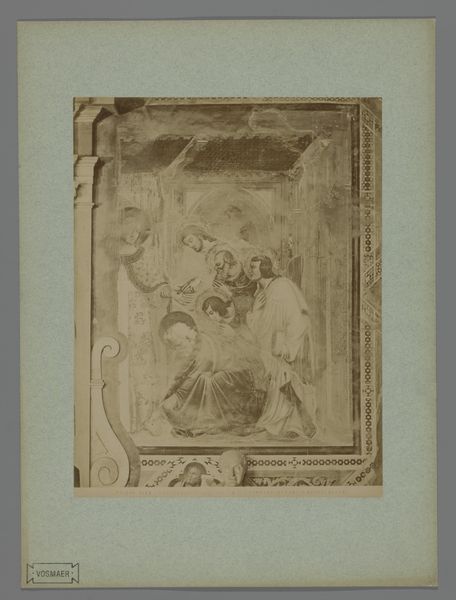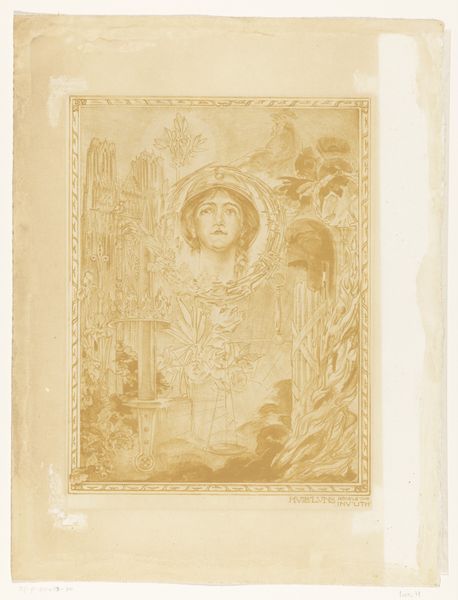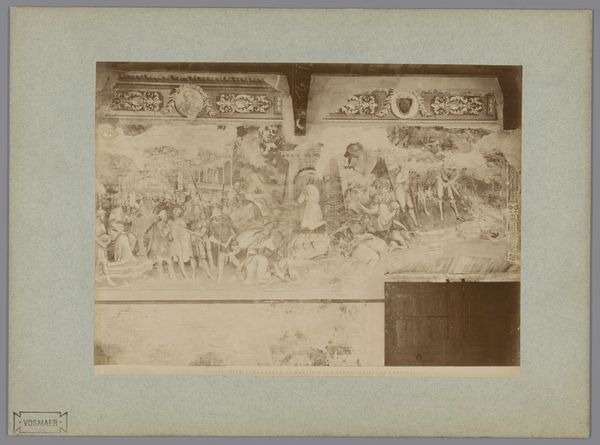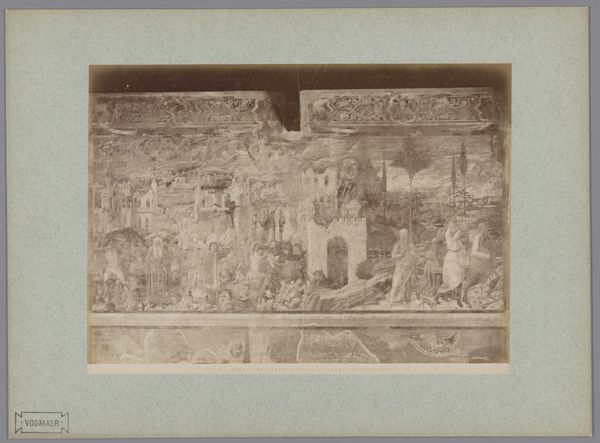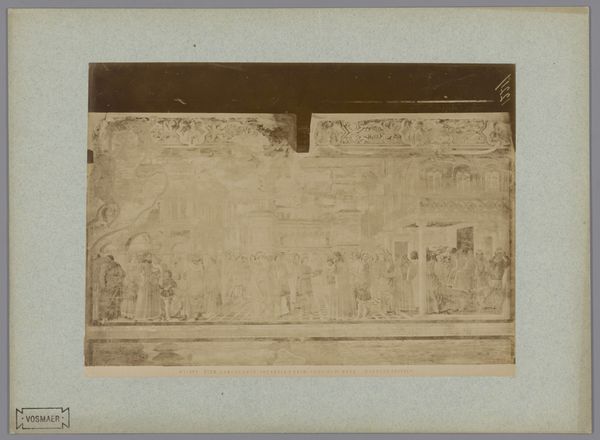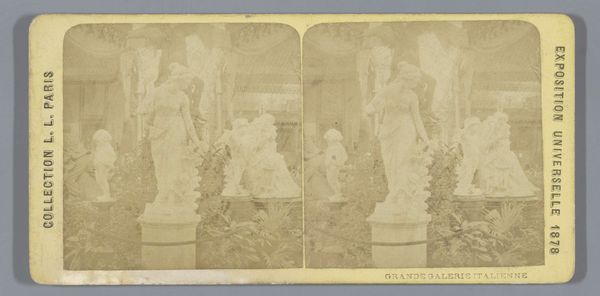
Fotoreproductie van een detail van het fresco De rampspoed van Job door Taddeo Gaddi in het Camposanto te Pisa, Italië 1857 - 1900
0:00
0:00
print, fresco, photography
#
portrait
#
water colours
# print
#
fresco
#
photography
#
history-painting
#
italian-renaissance
Dimensions: height 197 mm, width 252 mm, height 260 mm, width 353 mm
Copyright: Rijks Museum: Open Domain
Curator: This intriguing photograph, housed here at the Rijksmuseum, captures a detail of Taddeo Gaddi’s fresco, "The Misfortune of Job," originally located in the Camposanto in Pisa. This photographic reproduction was made sometime between 1857 and 1900 by Fratelli Alinari. Editor: Wow. There's something really haunting about it, almost dreamlike, isn't there? Like a faded memory of paradise found and lost, rendered in muted sepia tones. I see figures, angelic forms maybe, swirling around what appears to be a central divine figure? It is ghostly. Curator: Indeed. The Alinari brothers were known for documenting Italian art and architecture. This print gives us insight into how the fresco, made using watercolours, likely appeared to viewers in the 19th century before further deterioration of the original. The reproduction transforms a monumental fresco, a symbol of power, into a reproducible object for mass consumption. Editor: I imagine seeing the actual fresco would've been something else entirely, the weight of history bearing down. But in this photograph, stripped of its vibrant color, we have a gentler kind of history. The image makes me want to weep quietly; a sense of Job's trials rendered with poignant sensitivity. This photographic translation is almost a parallel meditation on suffering. Do you think this reproduction democratizes religious art? Curator: Certainly, through the materiality of photography, Gaddi's vision became accessible to a much broader audience. Reproductions like this served as a vital means of circulating visual culture, thus playing a role in shaping artistic taste. By making "high art" available as a photographic print, its aura diminishes, making it a more mundane object, part of one’s everyday life. Editor: Precisely. And on that mundane level, something beautiful remains in the softness of light, even as time takes its toll. So many layers of transformation. Curator: Each medium informs our perception. That final frame speaks volumes about context, availability, and the dissemination of visual knowledge.
Comments
No comments
Be the first to comment and join the conversation on the ultimate creative platform.
